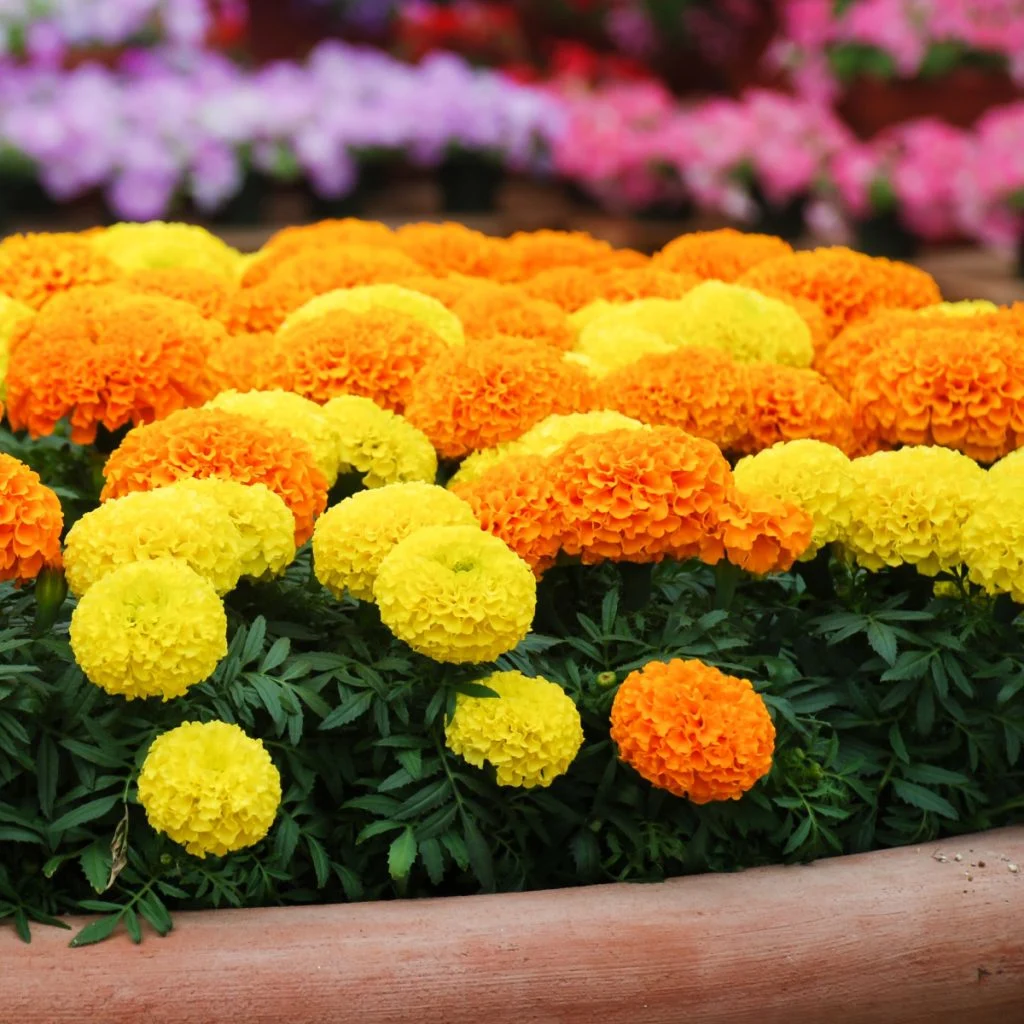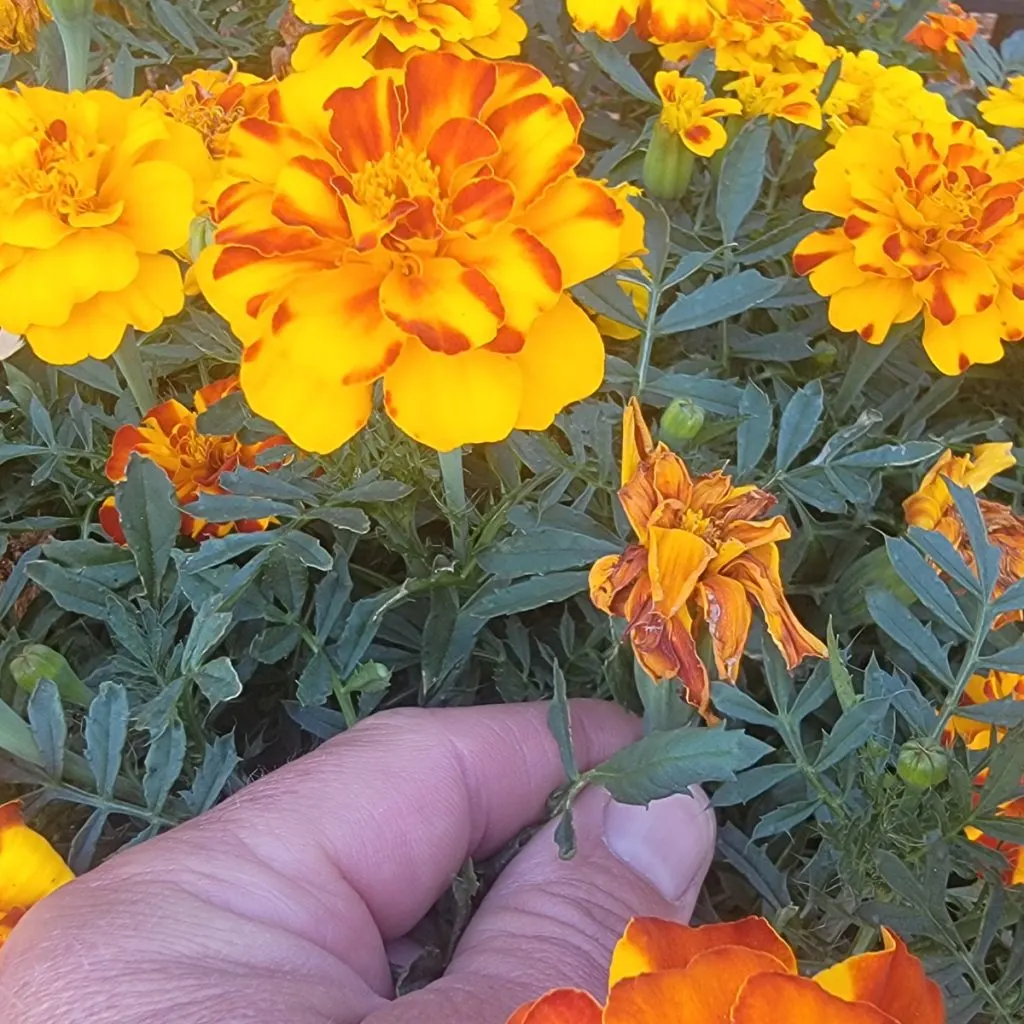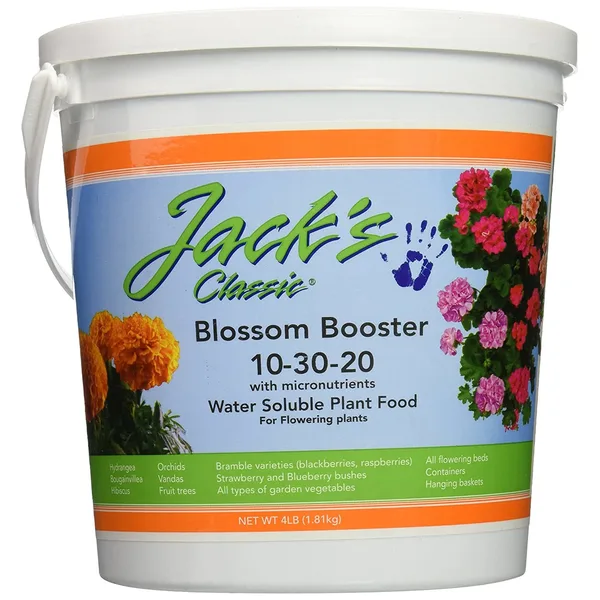Did you know that with just three simple tips you can keep your marigolds blooming big all through the summer months – and even into late fall?
Marigolds are one of the most dependable and vibrant blooming flowers you can grow in the summer garden. But while marigolds are known for their tough and hardy nature, they still need a little help if you want them to flower big and bright all summer.
Without proper care, marigolds can quickly fade, becoming leggy with fewer blooms and more spent flowers that make the plant look tired and worn out. The good news is that keeping your marigolds blooming strong is not difficult. In fact, it really comes down to just a few simple tasks done regularly – deadheading, fertilizing, and watering.

Get those three simple tasks right – and your marigolds can put on a show from early summer right through the first frost. And as you will see below, getting them right couldn’t be easier!
How To Keep Marigolds Blooming Big In The Summer
Deadheading – The Key To Continuous Blooms
The first and perhaps most important task for keeping your marigolds flowering is to deadhead them regularly. Deadheading is the process of removing old, faded, and dying blooms from the plant.
When marigold blooms begin to dry up, the plant naturally starts shifting its energy toward developing seeds. That’s because, like most flowering plants, the goal of the marigold is to produce seeds for reproduction.
Once the plant begins this process, it puts far less energy into forming new blooms. Instead, it begins to focus on maturing its seed heads. The result? Your plant becomes more focused on seed-making than blooming – and flower production slows down dramatically!
But by removing those old flowers right away, you stop the plant from going into seed-making mode. Instead, the plant continues producing fresh buds and flowers, using its energy to keep blooming rather than finishing its lifecycle.

The Ease Of Deadheading
Deadheading marigolds is easy to do and takes only a few seconds per plant. All you need to do is look for spent flowers that have faded or started to dry out. These often begin to turn brown or shrivel, and will have a papery feel to them.
Once you see a spent bloom, pinch it off just above the first set of leaves or the next flower bud below it. You can use your fingers or a small pair of garden scissors to make the cut. The big seed heads actually make a small popping sound as you snap them off.
It’s best to deadhead every few days or at least once a week. The more consistently you do it, the more flowers your plant will produce. For potted marigolds or hanging baskets, deadheading is especially important because the plant is growing in a confined space and needs to maximize its blooming energy. With regular deadheading, marigold plants will remain full, bushy, and vibrant well into late summer.
Fertilizing Marigolds To Keep Them Blooming
The second secret to keeping marigolds blooming strong in summer is to feed them regularly with a balanced liquid fertilizer that is high in both phosphorus and potassium.
Many gardeners make the mistake of using all-purpose or high-nitrogen fertilizers. This can actually hurt marigold blooming. That’s because too much nitrogen will cause the plant to grow more leaves and stems, but not necessarily more flowers.
Listen To Our Podcast Below On The Benefits Of Growing Marigolds!
Instead, marigolds benefit most from fertilizers that are specifically made for blooming flowers. These fertilizers have a nutrient ratio that focuses less on nitrogen and more on phosphorus and potassium. Phosphorus helps promote strong root development and flower formation. Potassium, meanwhile, strengthens the overall health of the plant and helps with flower color and size.
The Right Fertilizer
Look for a liquid bloom booster fertilizer with a nutrient ratio such as 10-20-20 or 10-30-20. These mixes have much more phosphorus and potassium than nitrogen, which encourages the plant to produce buds and blooms instead of just greenery. Affiliate Link: Jack’s Classic Blossom Booster 1.5 lbs, 10-30-20
Now it’s all about regular fertilizing! Once you have your fertilizer, it’s important to dilute it to half strength. A half-strength dose every 7 to 10 days is ideal and will help provide steady, gentle nutrients that promote long-term blooming. And by diluting it, you can feed more often.
Feeding your marigolds regularly in this way will keep them producing bloom after bloom. For potted marigolds, where soil nutrients run out more quickly, this is especially helpful. Even garden bed marigolds benefit greatly from regular fertilization during the heat of summer, when rain and watering can wash nutrients away.
Watering For Success – Consistency Is Everything
The third and final key to big summer blooms with marigolds is consistent watering. While marigolds are considered drought-tolerant compared to many other flowers, they still need a steady supply of water to keep producing buds and blossoms.

This is especially true during periods of intense summer heat or when they are growing in pots, where the soil dries out much more quickly.
In garden beds, marigolds usually need watering about once or twice per week, depending on rainfall and soil conditions. However, in containers or hanging baskets, watering needs to be more frequent – often daily during hot, dry stretches.
The biggest issue with inconsistent watering is that it causes stress to the plant. When marigolds dry out too much between waterings, they go into survival mode. Instead of producing new flowers, the plant starts conserving energy and moisture, which can cause blooms to stop altogether.
The Best Way To Water
The best way to water is deeply and thoroughly, allowing the water to soak down into the root zone. Shallow watering does very little for the plant, as it only wets the top inch or two of soil. Deep watering encourages roots to grow down into the soil where moisture holds better.
For containers, make sure each watering fully saturates the soil. Water until you see it start to drain out of the bottom of the pot. If your pot dries out too quickly, adding a layer of mulch on top of the soil will help to hold in moisture from evaporating too fast.
One thing to avoid is overwatering. Marigolds don’t like sitting in soggy soil, which can lead to root rot and other issues. Let the soil dry slightly between waterings, but never let it go bone dry. By keeping the soil evenly moist and avoiding long dry spells, your marigolds will keep putting on blooms all summer long.
With a little regular feeding, deadheading, and consistent watering – your marigolds grow strong, vibrant, and full of color from early summer through the end of the growing season! For more on growing marigolds, be sure to check out our article: The Best Marigolds To Grow To Repel Pests, Attract Pollinators – And Add Big Color!
This Is My Garden
Follow Our Facebook Page For Great Gardening Tips And Advice! This Is My Garden Facebook Page
This Is My Garden is a garden website created by gardeners, for gardeners. Jim and Mary Competti have been writing gardening, DIY and recipe articles and books and speaking for over 15 years from their 46 acre Ohio farm. They publish three articles every week, 52 weeks a year. Sign up today to follow via email, or follow along!
